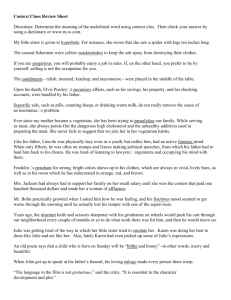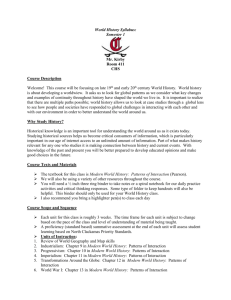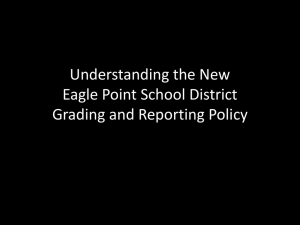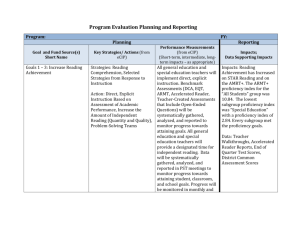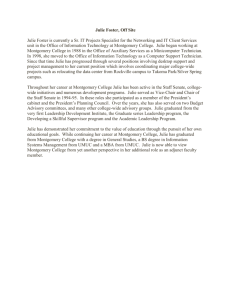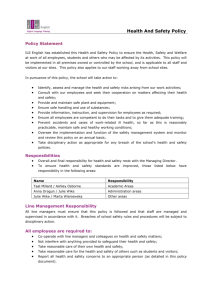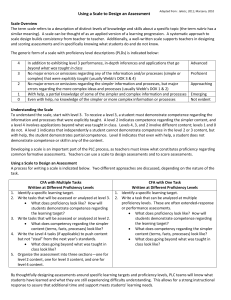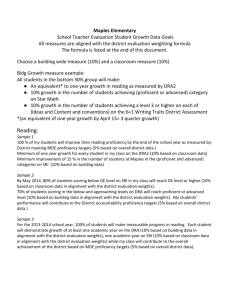SOMEA Oct2012 - Oregon Music Education Association
advertisement
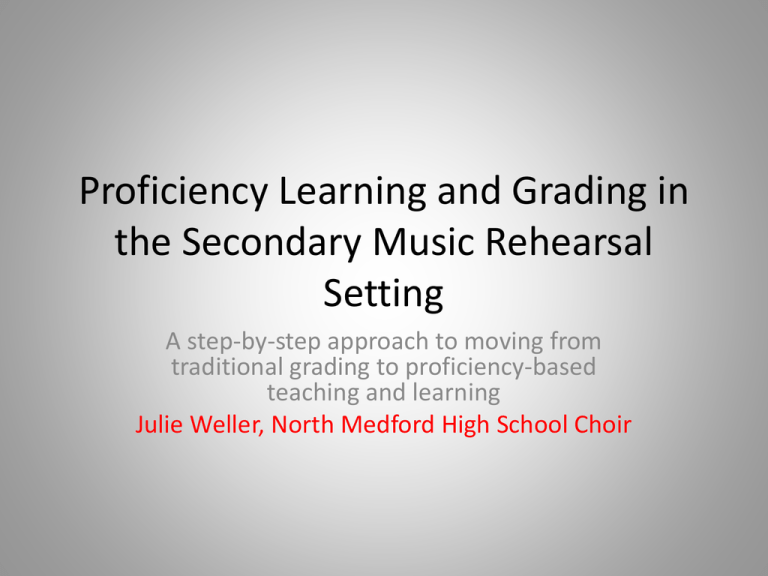
Proficiency Learning and Grading in the Secondary Music Rehearsal Setting A step-by-step approach to moving from traditional grading to proficiency-based teaching and learning Julie Weller, North Medford High School Choir What is Proficiency Learning and Grading? (see handouts) Overview • Step 1: Create a Mission Statement for your program • Step 2: Get to know your Standards • Step 3a-b: Select your Priority and Reporting Standards • Step 4: Map your curriculum • Step 5: Teach and Assess • The Coda: Some final thoughts Step 1: Create a Mission Statement Why is this important? • Your mission statement provides a solid framework on which you base everything you do in the classroom. • If you include your mission statement on your introductory letters, parents and students will know that your program is serious, pedagogical, and educationally sound. Consider including on all exams and assessments. Mission Statement • Keep it short and simple. • Use parent-friendly language. • Consider tying yours into your district’s or school’s existing statement. Take a few minutes and brainstorm your mission statement. Julie’s Mission Statement: The choir ensembles at NMHS honor the mission of the Medford Public Schools by preparing students to become independent musicians and critical thinkers. Participating in the choirs will promote mastery of musical skills and knowledge, and cultivate a sense of self-worth and social responsibility. Step 2: Know Your Standards • State or National??? • Post in your classroom • Refer to them regularly (see handouts) Take a few minutes to discuss the pros and cons of the State and National Standards. Which sets feels more usable to you? Why? I chose the National Standards Step 3a: Pick the Priority Standards for each class you teach. • Priority Standards are the ones that you plan to teach and assess in your class on a regular basis. (Research says 3-6 per quarter) • Students must meet proficiency in all of these standards to earn credit in your class. • Your Priority Standards CAN change from quarter to quarter.* *Your school’s grading system may or may not support this. If not, I have a way to get around this issue. Take a minute and discuss the standards that you would consider “Priority Standards” for your classes. National Standards for Music Education Julie’s Priority Standards • 1. Singing, alone and with others, a varied repertoire of music. • 2. Performing on instruments, alone and with others, a varied repertoire of music. • 3. Improvising melodies, variations, and accompaniments. • 4. Composing and arranging music within specified guidelines. • 5. Reading and notating music. • 6. Listening to, analyzing, and describing music. • 7. Evaluating music and music performances. • 8. Understanding relationships between music, the other arts, and disciplines outside the arts. • 9. Understanding music in relation to history and culture. Step 3b: Create Reporting Standards from your Priority Standards • Decide how you will report on these standards to parents and students: “Reporting Standards.” • Reporting Standards must be in parentfriendly language. • Post these in your room too. • Julie’s example Julie’s Reporting Standards: Performance (Standard 1) Music Reading (Standard 5) Musical Concept Analysis (Standards 6, 7, 9) Step 4: Map Your Curriculum • This is the hard part… • Find a format that works for you. • Connect each item in your curriculum to the Priority Standards. • Remember, your curriculum map is for you; the teacher. This is not a document that needs to be parent-friendly. • Julie’s example (handout) Step 5: Teach and Assess Some important aspects of Proficiency Teaching and Learning that may be different from “the old way”: • You will grade most of your assessments using rubrics. Try to base your rubrics on your school’s “Proficiency Continuum.” Example handout • You will make use of pre-assessments, formative and summative assessments. Only summative assessments will factor into a student’s grade. Example handouts Step 5 Continued… • You will need to be very clear on your learning targets for each unit of study. “I can” statements are great for this. Example Step 5 Continued… • You can no longer grade on attendance, punctuality, class participation alone. ALL assessments must relate to a content standard. “Ensemble Skills” example The Coda A few final thoughts • Don’t go it alone! • Find a PLC or a group of colleagues willing to work with you. • Keep in mind, we are all on a journey…
